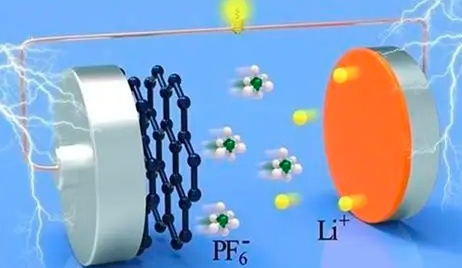Yongtai Technology 150,000 Tons/Year Electrolyte Production Capacity Continues To Release Lithium Battery "Injection Restoration" Black Technology Opens Up Billion Market Space
In September, with the lithium battery production peak season arriving, the demand-side benefits have led to a firm and slightly upward trend in electrolyte prices. On September 23, Yongtai Technology (002326.SZ) responded to investor inquiries on the Interactive Easy platform, stating that the company's commissioned electrolyte production capacity is 150,000 tons per year, and the capacity is gradually being released. The production and sales scale has increased year-on-year, with downstream customers mainly being leading lithium battery companies. The company's liquid lithium bis(fluorosulfonyl)imide production capacity is 67,000 tons per year, and the capacity utilization rate is steadily improving.
Data shows that in the first half of 2025, the company's lithium battery and other materials segment achieved revenue of 871 million yuan, accounting for 33.38% of total revenue, with a year-on-year growth of 105.74%. Among them, the subsidiary Yongtai New Energy's electrolyte production capacity is gradually being released, with operating revenue and net profit increasing by 131.19% and 389.45% year-on-year, respectively. The company has formed an integrated industrial chain by laying out lithium salt raw materials, lithium salts, additives, and electrolytes, which effectively enhances cost control capabilities and market response speed, becoming an important driver of performance growth.
As the global energy transition progresses, the market demand for lithium batteries in key areas such as new energy vehicles and energy storage systems has shown an explosive growth trend, which in turn has driven the prosperity of the electrolyte market, one of the four major materials of lithium batteries. As the world's largest producer and consumer of electrolytes, China has developed a production capacity exceeding 5 million tons per year, accounting for more than 90% of the global total.
Currently, amidst the wave of the global new energy revolution, new energy vehicles have entered a rapid development phase as an important means for countries to achieve carbon neutrality. According to statistical data, the sales of new energy vehicles in China have consistently maintained a year-on-year growth trend. From January to June 2025, the production and sales of new energy vehicles reached 6.968 million and 6.937 million units respectively, representing year-on-year increases of 41.4% and 40.3%. Meanwhile, driven by energy transition and the "dual carbon" goals, the development of energy storage is progressing rapidly. Additionally, the low-altitude economy, as the next trillion-dollar blue ocean, with drones and eVTOLs as representatives, is forming a new engine driving growth in the demand for new energy batteries, thereby further boosting the demand for battery raw materials.
Lungzhong Information analysts believe that from the demand side in September, the trend of growth in end-market demand is clear. The energy storage sector benefits from the dual advantages of long-term favorable domestic orders and the extension of U.S. tariffs, leading to a continuous rise in demand. In the power sector, the expectation of the "Golden September and Silver October" peak season for car sales drives battery cell companies to start stocking up in advance. Under the synergistic effect of both energy storage and power sectors, overall demand is growing significantly, and it is expected that there will be a peak in production at the end of the year in October and November.

Shanxi Securities believes that the company will turn a profit in the first half of 2025. Recently, with the rise in prices of lithium hexafluorophosphate/electrolyte, the company's profitability is expected to continue to improve. In addition, the establishment of a joint venture with the core team from Fudan University, focusing on the "injection recovery" black technology for lithium batteries, further consolidates Yongtai Technology's market position in the new materials sector for lithium batteries.
According to the disclosure from Fudan University’s official account, trifluoromethylsulfonic lithium can extend battery life by 1-2 orders of magnitude. Yongtai Technology has already begun small-scale production and continues to supply samples to leading lithium battery companies. The material can be directly added to new batteries and is compatible with existing production lines. Shanxi Securities estimates that based on the projected global demand for lithium battery electrolytes of over 2 million tons in 2025, if 50% of batteries require the addition of 3-5% of this new lithium supplement, the demand would be approximately 30,000 to 50,000 tons. With the reference price of conventional lithium supplements ranging from 300,000 to 500,000 yuan per ton, the market potential exceeds 10 billion yuan.
【Copyright and Disclaimer】The above information is collected and organized by PlastMatch. The copyright belongs to the original author. This article is reprinted for the purpose of providing more information, and it does not imply that PlastMatch endorses the views expressed in the article or guarantees its accuracy. If there are any errors in the source attribution or if your legitimate rights have been infringed, please contact us, and we will promptly correct or remove the content. If other media, websites, or individuals use the aforementioned content, they must clearly indicate the original source and origin of the work and assume legal responsibility on their own.
Most Popular
-

Zf asia-pacific innovation day: Multiple Cutting-Edge Technologies Launch, Leading Intelligent Electric Mobility
-

Mexico officially imposes tariffs on 1,400 chinese products, with rates up to 50%
-

Fire at Sinopec Quanzhou Petrochemical Company: 7 Injured
-

List Released! Mexico Announces 50% Tariff On 1,371 China Product Categories
-

Argentina Terminates Anti-Dumping Duties on Chinese PVC Profiles! Kingfa Technology & Siemens Sign Digital and Low-Carbon Cooperation Agreement






